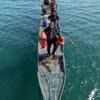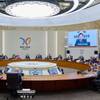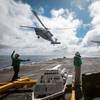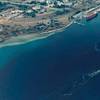Shrinking Arctic Sea Ice Raises Security Concerns
Shrinking ice cover is making the Arctic more accessible to various countries, commercial entities and researchers, among others.
"While Arctic sea ice continues to shrink, human activity in the region is only growing. Ice extent, which is monitored by the U.S. National Ice Center (USNIC), often determines what types of activities are pursued in the region," says NOAA National Environmental Satellite, Data, and Information Service (NESDIS).
This increased human activity in the Arctic has also led to more national security concerns from both a traditional and non-traditional point of view. For the U.S., national security in the Arctic is more than just shielding the nation from potential threats to the northern border.
Instead, the nation is starting to look at Arctic security more broadly. As changes continue in the region, the U.S. is considering national security from an environmental, economic and resource development perspective.
The U.S. National Ice Center, which is part of the National Environmental Satellite, Data and Information Service (NESDIS), uses satellite data from NOAA, NASA, and other domestic and international agencies to monitor sea ice extent across the Arctic.
Kevin Berberich, the deputy director of the USNIC, explained that ice analysts use a combination of visible and infrared satellite imagery and space-based synthetic aperture radar, among other data sets, to determine ice extent.
Berberich and Shannon Jenkins, the U.S. Coast Guard’s senior Arctic policy advisor, both pointed out that just because ice is retreating, it doesn’t mean there isn’t ice still out there.
In response to the growing opportunities and risks in the region, several federal entities are updating or developing new Arctic strategies. For example, the U.S. Department of Homeland Security (DHS) has started developing its own strategy for the region to address the evolving security and sovereignty environment.
With this increased presence in the Arctic, there is also a heightened threat of pollution, oil spills, and illegal, unreported and unregulated fishing, among other things.










